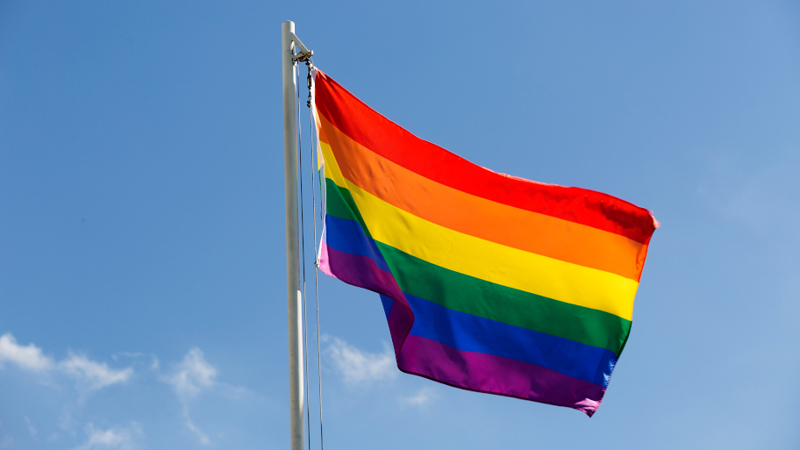Equal working life increases flow, efficiency and commitment
We spend a large part of our lives working, which is why equality and parity at work is particularly important. We can only bring our full potential to work if we feel safe in our environment and if we are allowed to be our genuine selves at work. If we need to hide who we are in our everyday lives, it eats away at our energy levels. Therefore, promoting equality and diversity has a direct link to personnel’s well-being, performance, the organization’s reputation and results and the employer image. Anu Harjumaaskola, Occupational Health Psychologist at Terveystalo, explains what kinds of action in work communities can ensure and maintain equality.

In our society, Finnish working life and even globally, equality is the starting point of cooperation. Many organizations have assessed questions of equality in relation to the time they are living in, and in the previous decades, they have addressed questions such as gender equality, age discrimination and ethnicity.
“Right now, we are on a journey of understanding and adopting questions related to diversity. In the future, these questions will most likely be considered as normal and self-evident as questions related to environmental responsibility are today,” says Harjumaaskola.
In her work as an occupational psychologist, Harjumaaskola has discovered that there have been huge leaps of progress in the field of gender sensitivity, diversity and equality in recent times, and the concept of a safe space, for example, is increasingly present in various events and meeting places. Many work communities also pay better attention to gender-neutral terminology, and have updated their equality and parity plans to cover the concept of gender diversity as well.
“The operating environment and customer base increasingly require organizations to consider questions of diversity. Companies cannot give such a customer promise outwardly before making the same promise to their personnel. For example, if a restaurant promises to be a safe space for its customers, it must also be a safe space for its personnel or the promise lacks credibility,” says Harjumaaskola.
Regulations and policies maintaining structural inequality still exist in society and can be hard to identify if they do not impact your everyday life. The Transgender Act, for example, specifies what is possible in life and what is not. Organizations may have similar restrictions and conditions that shut some people out, even if that is not their purpose. On a journey to an equal organization, the employer is responsible for demonstrating the will to respect diversity and setting up standards for how to act when someone violates that goal.
“Setting up standards is a good idea, because studies show that the workplaces where, from the new employee orientation onwards, everyone understands the rules of interaction and the shared operating model for addressing inappropriate behavior and harassment have a lower incidence of inappropriate behavior compared to other organizations,” says Harjumaaskola.
Actively promoting equality strengthens employees’ work ability, motivation and commitment to the organization.
“Each employee needs to feel treated fairly and justly at work and to feel safe at work. This keeps the mental load of working life in check and prevents harmful stress which, if prolonged, can lead to burnout and illness,” says Harjumaaskola.
Words create our reality
An equal work community stems from the right attitude; willingness to learn, being aware of your actions, even when unintentional, and understanding diversity. To ensure equality, working environments should pay attention not only to compliant operations but to the practical application of the spoken language and the ways of phrasing things.
1) Never assume anything but diversity
We are all unique individuals. Talk of sexual minorities unintentionally includes the assumption of the existence of a majority. In reality, each one of us is part of some type of minority, which is why it is more equal to talk about diversity.
2) Adopt the terminology
A positive and interested attitude towards learning is the decisive factor. Learn about the rainbow vocabulary found on the Seta website and learn more about diversity and safe, gender-sensitive terminology.
3) Examine your way of talking and make it equal
Spoken language can often be unintentionally loaded, so examine your way of talking and think about ways to express things more equally. Think about your workplace; does it ‘allow’ and ‘tolerate’ differences? ‘Accepting’ difference suggests that every one of us is not a unique individual. It is more equal to say that your workplace appreciates diversity.
4) Put your phrasing appreciating diversity into practice
Phrasing and statements should translate to practical choices, such as gender-neutral spaces and the option to personally define your gender in surveys and forms. Especially in fields where the employees meet people, it is a good idea to train your personnel to consider diversity in their encounters and mutually agree on a policy of using gender-neutral terms.
According to Harjumaaskola, the main issue is that organizations wake up to this topic and set out on a journey in line with their resources towards a diverse and healthy work community. Maintaining equality and parity requires constant work as organizations that do not develop tend to fall back.
Latest articles

Terveystalo's digital services have been awarded the internationally recognized ISO27001 information security certification.
Terveystalo's information security practices, processes, and risk management are in line with international best practices.

Does massage help relieve stress? – Touch restores and calms the body and mind
Stress is not always visible on the outside, but the body does show signs when the strain increases. According to Lassi Ylönen, a trained massage therapist at Terveystalo Rela, the body often communicates stress through subtle signs.

Niko Laaksonen from Terveystalo named Occupational Health Nurse of the Future 2025
On Friday, November 14, 2025, Terveystalo occupational health nurse Niko Laaksonen received the Finnish Association of Occupational Health Nurses' 2025 Future Occupational Health Nurse award. The award is a testament to Niko's strong professional expertise, innovative approach, and desire to develop occupational health care together with customers and colleagues.

Kela will reimburse occupational health care costs starting January 1, 2026, immediately upon signing an employment contract
Kela will reform its occupational health care reimbursement practices from the beginning of 2026. In future, employers will receive reimbursement for costs immediately upon signing an employment contract, even if the work does not commence until later.

Boost the effectiveness of work ability management by addressing the root causes
Terveystalo has been utilizing the modern blood analysis technology developed by our partner Nightingale to support preventive work ability management for almost two years. We are constantly striving to develop our operations because we want to ensure that our customers are guided onto the appropriate path and receive support and guidance in implementing lifestyle changes that reduce their risk of illness.

The use of Alfa-PVP has become more common in Finland – a new laboratory package takes into account changes observed in substance use
The use of intoxicating drugs has grown steadily in Finland over the past decade. In recent years, the spread of synthetic drugs such as Alfa-PVP, also known as "peukku," has been a particular cause for concern. For this reason, Alfa-PVP has now been added to the new occupational health laboratory test package.